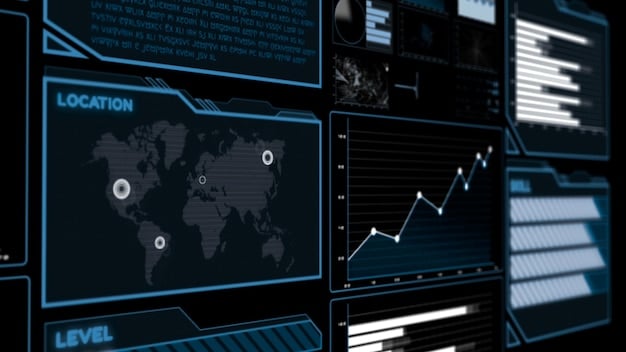AI-Driven Cybersecurity: Real-Time Threat Detection & Prevention

AI-driven cybersecurity provides real-time threat detection and prevention, utilizing machine learning algorithms to identify and neutralize cyber threats with up to 95% accuracy, significantly enhancing an organization’s security posture.
In today’s digital landscape, where cyber threats are becoming more sophisticated and frequent, traditional cybersecurity measures often fall short; however, AI-driven cybersecurity: Detect and Prevent 95% of Threats in Real-Time, offering a proactive and adaptive approach to safeguard your valuable data and systems.
Understanding AI’s Role in Modern Cybersecurity
Artificial intelligence (AI) is revolutionizing cybersecurity, providing capabilities that traditional systems simply can’t match; specifically, by understanding how AI is being integrated into cybersecurity, organizations can develop strategies to better protect their assets.
The Evolution of Cybersecurity
Cybersecurity has evolved from basic antivirus software to complex threat detection systems; therefore, AI is the next step, offering advanced pattern recognition and predictive analysis.
How AI Enhances Threat Detection
AI algorithms can analyze vast amounts of data in real-time, identifying anomalies and potential threats that humans might miss; specifically, this capability is crucial in preventing zero-day attacks and other advanced persistent threats (APTs).
- Machine Learning: Learns from data to improve threat detection accuracy.
- Natural Language Processing (NLP): Analyzes text and code to identify malicious intent.
- Behavioral Analysis: Detects abnormal behavior patterns that indicate a threat.
By leveraging these technologies, AI-driven systems provide a more robust and adaptive defense against cyber threats; thus, understanding these core features helps businesses deploy more effective security measures.
Key Benefits of AI-Driven Cybersecurity
Implementing AI-driven cybersecurity comes with numerous benefits, enhancing an organization’s ability to detect, prevent, and respond to cyber threats; however, to truly appreciate its value, it’s important to explore these advantages in detail.
Real-Time Threat Detection
AI systems can monitor network traffic and system logs in real-time, identifying threats as they emerge; specifically, this capability is critical in preventing breaches before they cause significant damage.
Automated Incident Response
AI can automate many aspects of incident response, such as isolating infected systems and deploying patches; furthermore, this reduces the time it takes to contain a breach, minimizing its impact.
- Faster Response Times: AI algorithms respond in milliseconds, reducing dwell time.
- Reduced Workload: Automates repetitive tasks, freeing up human analysts.
- Improved Accuracy: Minimizes human error in incident response.
These benefits collectively contribute to a more resilient and effective cybersecurity posture; therefore, investing in AI-driven solutions is becoming a necessity for organizations of all sizes.

Implementing AI in Your Cybersecurity Strategy
Integrating AI into your cybersecurity strategy requires a thoughtful approach to ensure it aligns with your organization’s specific needs and goals; however, a well-planned and executed implementation can significantly enhance your security posture.
Assessing Your Cybersecurity Needs
Start by evaluating your current cybersecurity infrastructure and identifying gaps where AI can provide additional protection; for instance, this may involve conducting a risk assessment or penetration testing.
Choosing the Right AI Solutions
Select AI-driven cybersecurity tools that align with your organization’s risk profile and industry-specific threats; moreover, consider factors such as scalability, ease of integration, and vendor reputation.
Successful implementation of AI in cybersecurity requires careful planning and execution; consequently, the right solutions can dramatically reduce your risk of cyber incidents.
Overcoming Challenges in AI Cybersecurity
While AI-driven cybersecurity offers immense potential, it also presents several challenges that organizations must address to maximize its effectiveness; however, with the right strategies and best practices, these obstacles can be overcome.
Data Quality and Availability
AI algorithms require large amounts of high-quality data to train effectively; furthermore, ensuring data accuracy and availability can be a significant challenge, especially for smaller organizations.
Skills Gap
Implementing and managing AI-driven cybersecurity solutions requires specialized skills that are often in short supply; however, investing in training and hiring AI experts can help bridge this gap.
- Continuous Learning: AI systems must be continuously updated with new data and threat intelligence.
- Bias Mitigation: Address potential biases in AI algorithms to ensure fair and accurate threat detection.
- Explainability: Understand how AI systems make decisions to build trust and confidence.
Addressing these challenges is essential for realizing the full potential of AI in cybersecurity; therefore, a proactive and strategic approach is key.
The Future of AI and Cybersecurity
The intersection of AI and cybersecurity is rapidly evolving, with new advancements promising to further enhance threat detection and prevention capabilities; moreover, understanding these trends is crucial for staying ahead of cyber threats.
AI-Powered Threat Hunting
AI will play an increasingly important role in threat hunting, proactively searching for hidden threats within an organization’s network; specifically, this capability will help organizations identify and neutralize threats before they cause significant damage.
Autonomous Security Systems
Future cybersecurity systems will be more autonomous, capable of detecting, responding to, and recovering from cyber attacks without human intervention; therefore, this will significantly reduce response times and improve overall security.

The future of cybersecurity is inextricably linked to AI; thus, organizations must embrace these technologies to stay protected in an increasingly complex threat landscape.
Measuring the Success of AI-Driven Cybersecurity
Measuring the effectiveness of AI-driven cybersecurity is essential to ensure that your investment is delivering the expected benefits; however, defining and tracking the right metrics can be challenging.
Key Performance Indicators (KPIs)
Establish KPIs that align with your organization’s cybersecurity goals, such as the number of threats detected, the time to detect and respond to incidents, and the reduction in successful attacks; furthermore, these metrics will help you track progress and identify areas for improvement.
Regular Audits and Assessments
Conduct regular audits and assessments to evaluate the performance of your AI-driven cybersecurity solutions; therefore, this will help you identify vulnerabilities and ensure that your systems are up-to-date.
- Threat Detection Rate: Percentage of threats successfully identified by the AI system.
- False Positive Rate: Number of false alarms generated by the AI system.
- Incident Response Time: Time taken to detect and respond to a security incident.
By continuously monitoring and measuring the performance of your AI-driven cybersecurity solutions, you can ensure that they are providing the protection your organization needs; thus, this data-driven approach is crucial for optimizing your cybersecurity strategy.
| Key Point | Brief Description |
|---|---|
| 🛡️ Real-Time Detection | AI monitors networks and systems constantly for immediate threat detection. |
| 🤖 Automated Response | AI systems automate incident response to reduce damage and downtime. |
| 🎯 Targeted Solutions | AI solutions are customized to align with specific organizational needs. |
| 📈 Performance Metrics | Success is determined by KPIs like threat detection and response times. |
Frequently Asked Questions
▼
AI algorithms analyze vast amounts of data in real time, identifying anomalies and patterns that may indicate a cyber threat, enabling faster and more accurate detection.
▼
Yes, AI can automate many aspects of incident response, such as isolating infected systems, deploying patches, and notifying relevant personnel, which reduces response times.
▼
Challenges include the need for high-quality data, a shortage of skilled AI professionals, and the potential for biases in AI algorithms to skew threat detection.
▼
Success can be measured through KPIs (Key Performance Indicators) like threat detection rate, false positive rate, incident response time, and reduction in successful cyber attacks.
▼
The future includes more AI-powered threat hunting, autonomous security systems capable of self-defense, and enhanced predictive analytics to anticipate and prevent cyber threats proactively.
Conclusion
AI-driven cybersecurity represents a paradigm shift in how organizations protect themselves from cyber threats. By leveraging the power of artificial intelligence, businesses can detect and prevent attacks in real-time, automate incident response, and proactively hunt for hidden threats, resulting in a more resilient and secure digital environment. As cyber threats continue to evolve, AI will remain a crucial tool in safeguarding valuable assets and ensuring business continuity and should be seriously considered by any organization looking to improve their cybersecurity posture.





